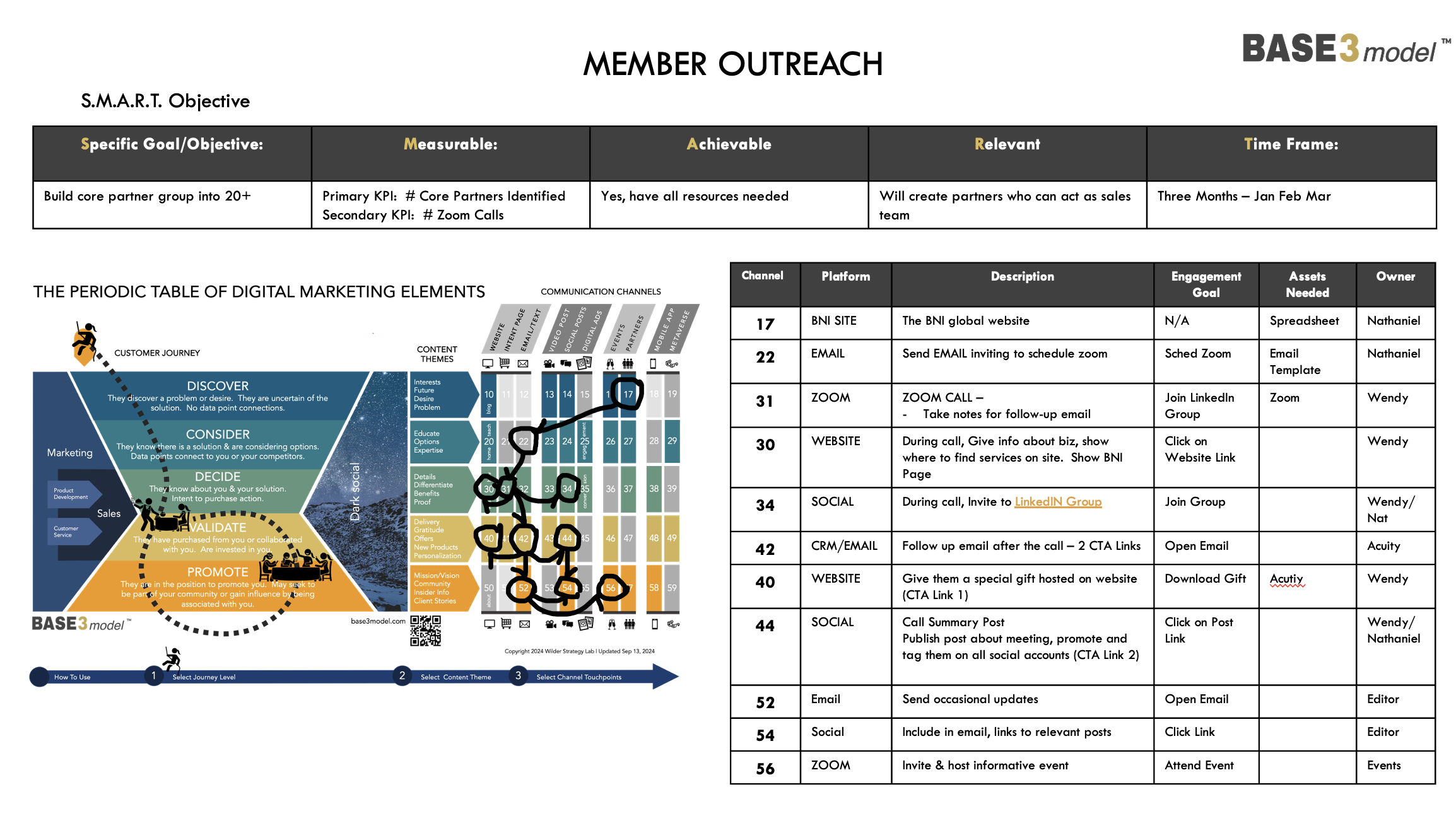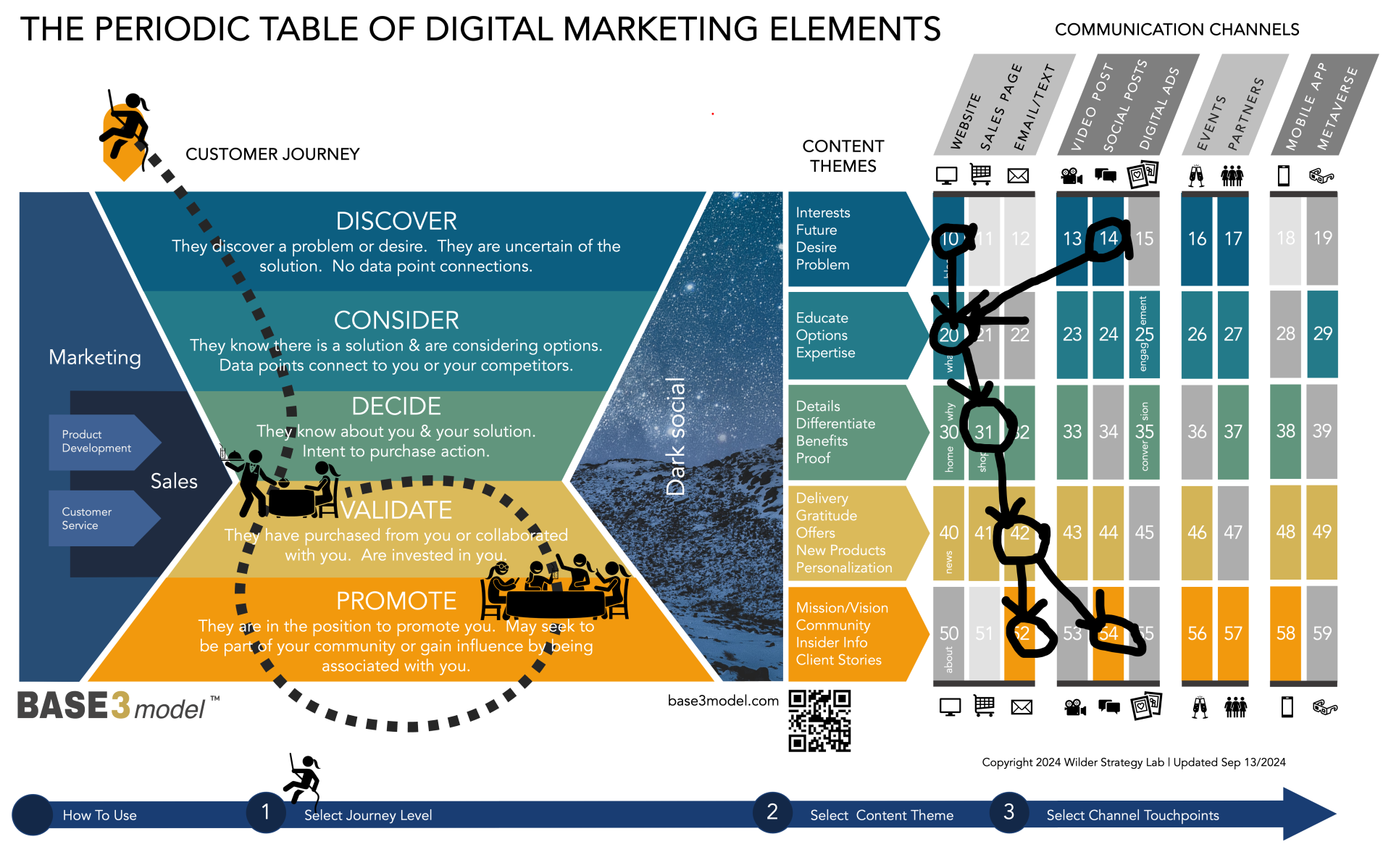
A marketing campaign leads a customer from one touchpoint to another. The full set of touchpoints and how they lead to each other are the architecture of a marketing campaign.
The Definition of Digital Marketing
Digital marketing can be defined as the customer journey, aided by algorithms, and supported by your outreach.
Definition of a Digital Marketing Campaign
A digital marketing campaign can be defined as one instance of a business strategically placing content at touchpoints to guide the customer journey.
Definition of the Architecture of a Digital Marketing Campaign
The touchpoints of a marketing campaign and how they lead to each other are the architecture of a digital marketing campaign. See the chart below.
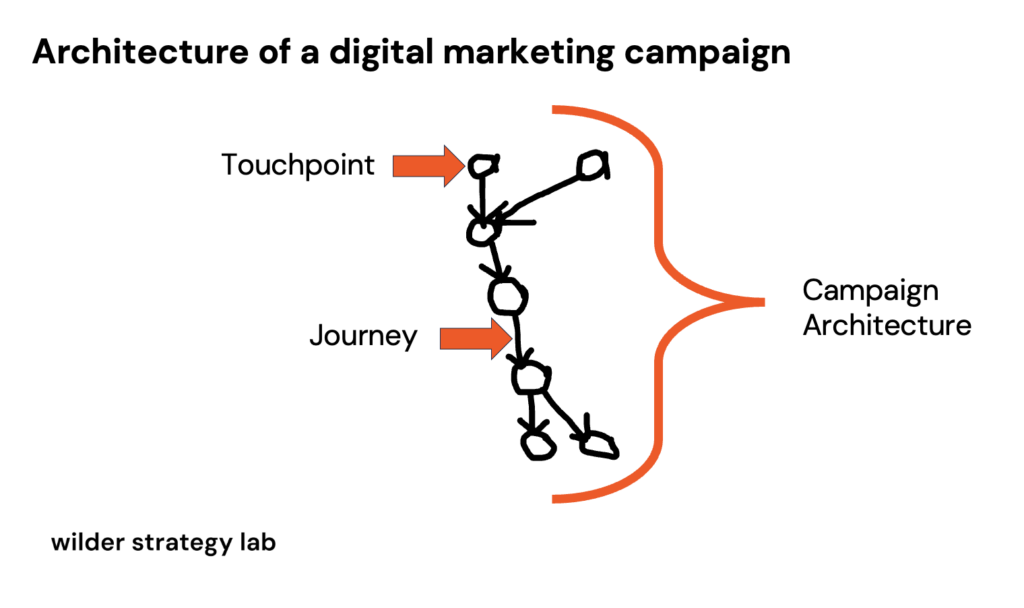
The architecture of a marketing campaign is best presented visually to illustrate the touchpoints along that journey. The BASE3 model provides a visual chart that can be used for this purpose.
The diagram below illustrates a campaign that includes a LinkedIn event that is co-branded and promoted by Wilder, in partnership with Skoop, a personalized video app available on Google Apps. Each number on the channel grid represents a specific touchpoint. In the production document, detailed instructions can be organized numerically by these touchpoints.
Campaign Architecture Example On The BASE3 Chart
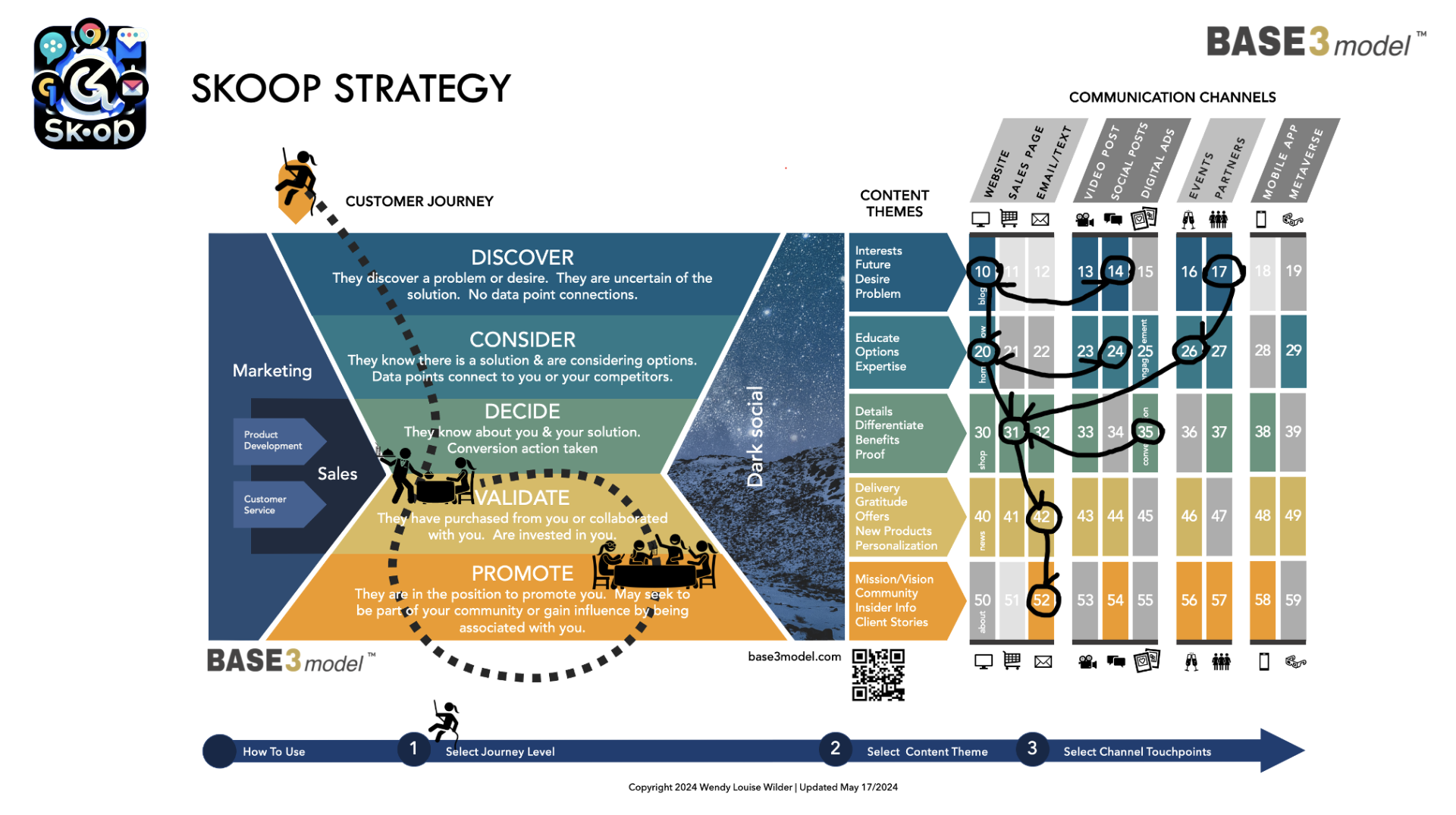
Steps For Determining A Marketing Campaign’s Architecture
A marketing campaign can incorporate many tactics such as running an ad, and an email blast, both linking to a sales page, all working together to achieve a particular goal. You need to be thinking of the customer’s entire journey. The documentataion of the entire journey becomes the architecture of the campaign.
Planning A Campaign
Following are typical steps needed to plan a marketing campaign.
Overview:
- Determine your SMART Objective
- Identify the starting touchpoint of the campaign
- Decide on the content topic/copywriting subject
- Identify all touchpoints in the campaign
- Determine engagement for each touchpoint
Step 1: Determine Your SMART Objective
Before planning a campaign, it is important that you are clear about what you want to accomplish with your campaign. A campaign should have just one main objective, with a possible secondary objective. This will prevent you from spreading your messaging and budget too thin. It is better to have three separate campaigns running with narrow objectives than one giant campaign trying to achieve all three.
Using the S.M.A.R.T. objective method is one way to ensure that you are being efficient and disciplined in your campaign planning. Rather than think of this as a constraint, remember that the more specific you are, the more creative you can be. The acronym SMART stands for: Specific, Measurable, Achievable, Relevant, and Time-Bound.
The most important consideration in determining the architecture of a marketing campaign is what are the touchpoints in a customer’s journey. Once you have identified which touchpoints are critical in guiding your customer to a sale, you can then begin to plan a campaign that guides them along that journey.
Step 2: Identify Campaign’s Starting Level In Your Customer’s Decision Journey
It is important to deeply study how humans make decisions, and what kind of information they are looking for along the decision making process. This process is commonly called “The Customer Journey” and should be integrated into your “Lead Funnel”, which is represented by a funnel shape. We have created a quick-guide to help you understand what a campaign architecture should look like, and determine what tactics will work best based on where your customers are in their journey.
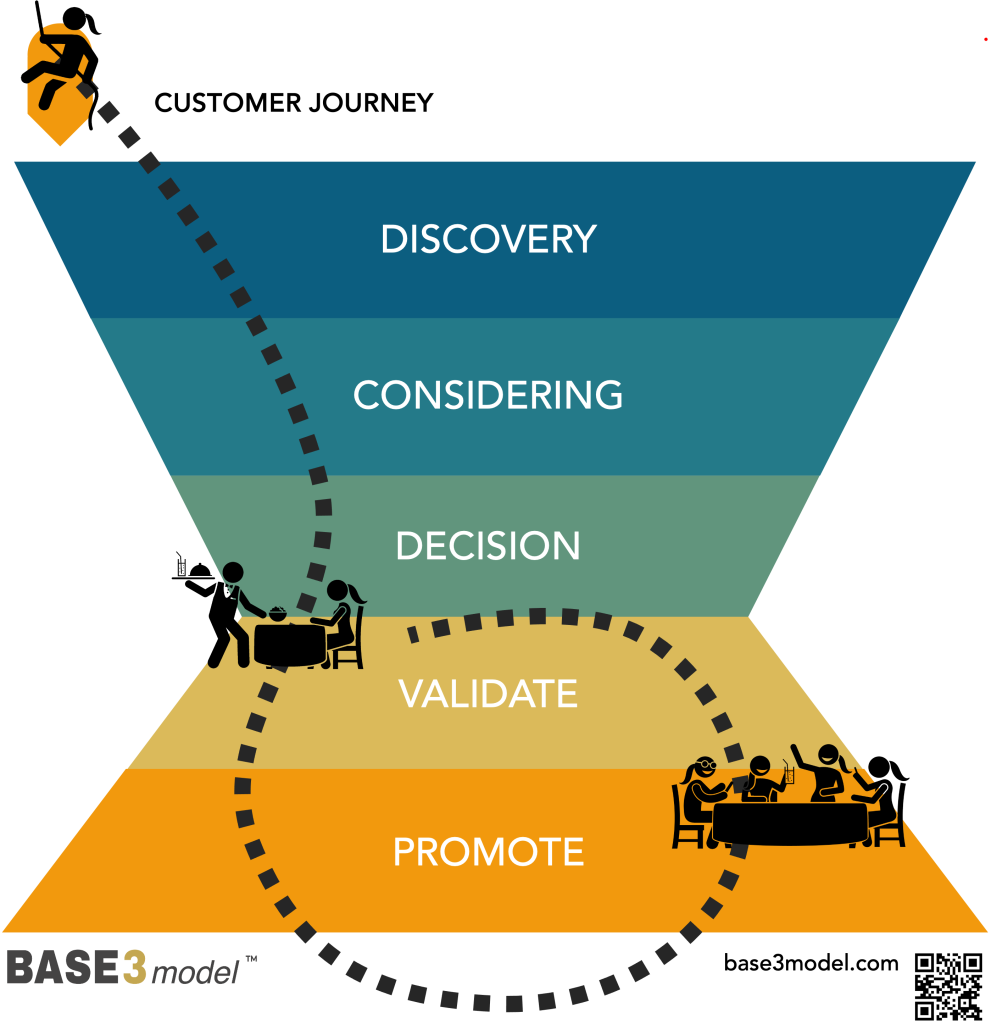
The Customer Journey & Human Decision Making Process:
Discover– are aware of the problem or desire, may not know what the solution is.
Consider – have become aware of a solution and are looking at options.
Decide – have made a decision, and are ready to make a purchase
Validate – seek support from friends and and solution source that they made the right decision
Promote – create a community around the decision by promoting it to others
Step 3: Determine Content Theme/Copywriting Subject
Customers will be needing different information as they move through making a decision. Based on a quote by famed copywriter Edward Schwartz, following is a description of what information customers generally are looking for as they move to making a decision:
Content To Prepare For Your Customers
Discovering Level: About their desire, the problem, and what it would be like if their problem was solved.
Consideration Level: Educate them, talk about all of the options even your competitors, show your expertise in the subject matter.
Decision Level: Differentiate yourself from your competitors, talk about the details and benefits of your solution, and offer proof.
Validation Level: Create a relationship with your customer. Give special offers, insider information, and news.
Promoting Level: Emphasize your brand values. Share client success stories, provide referral rewards and affiliate agreements, and opportunities to be in a community around your brand.
The chart below has the Content Themes highlighted for your review.
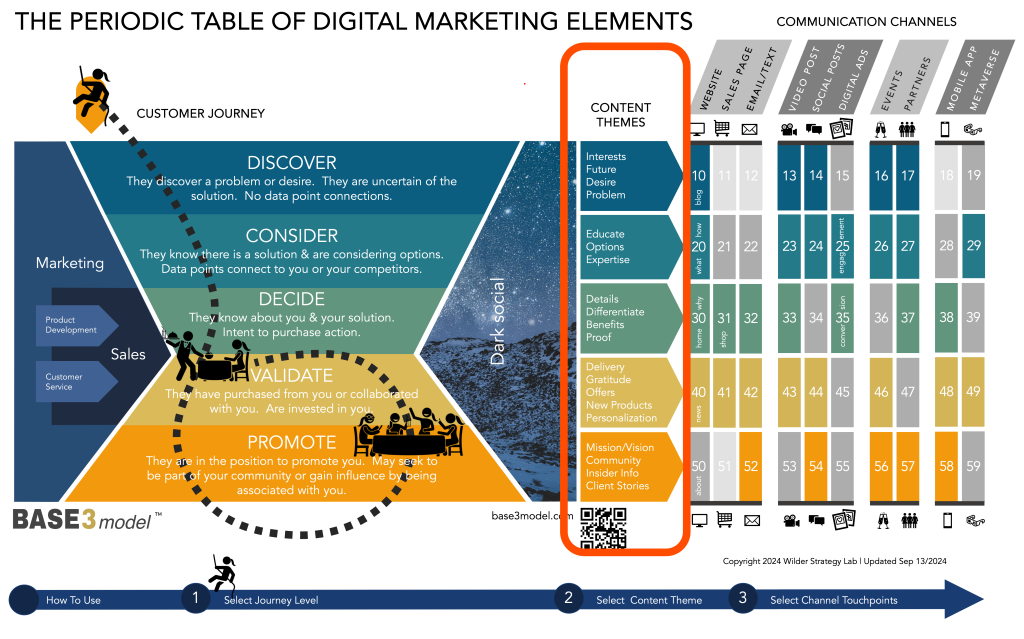
Step 4: Identify all touchpoints in the campaign
Your customers will engage with your brand at different touchpoints along their journey. Ensuring that you are guiding that journey by strategically placing the right content in front of them is an important part of your digital strategy.
What channels to use and when
The below BASE3 model chart has the touchpoints and journey diagrammed out to show the channels that you will likely be using to engage your customer along their journey. The channels are in a grid, color coded by decision level, and importance.
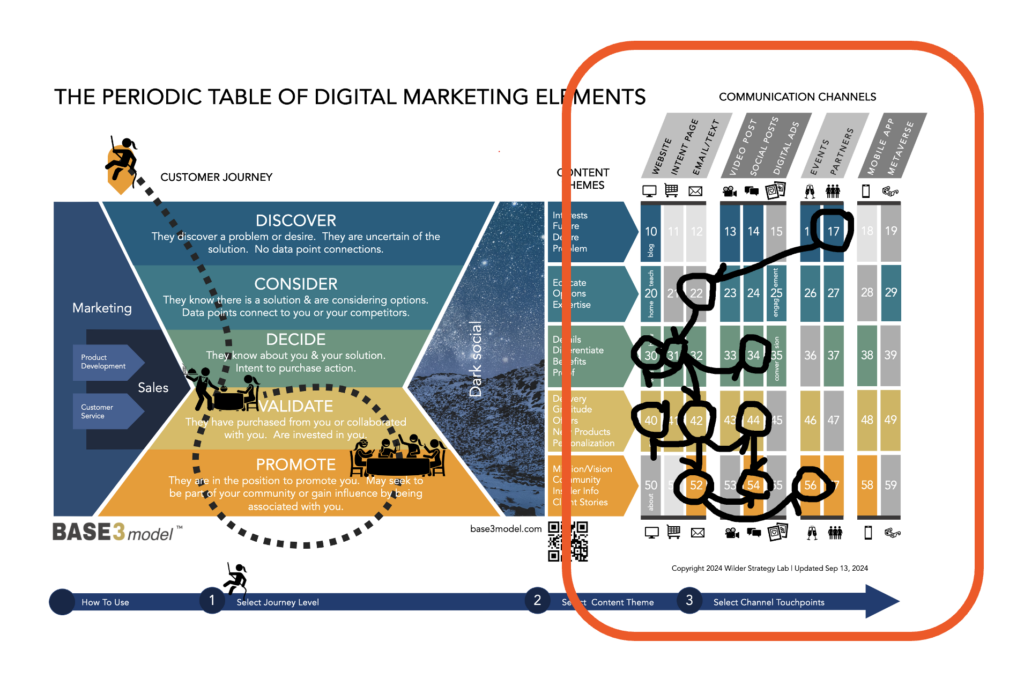
Communication Channels
Discovery – get found
- Articles using appropriate keywords for searches
- Social posts using hash tags for discovery, & engaging with others
- Awareness Ads (expensive)
- Events, talks, podcast guest, etc.
- Work with partners to get the word out (influencers, etc.)
Consideration – educate them, show your expertise
- Articles showing comparison
- Social posts displaying your knowledge, expertise, skill
- Ads – they know about you, so engagement ads
Decision – give them the differentiate, details, benefits & proof
- Landing pages
- Supporting emails
- Video
- Social Posts
- Retargeting Ads
Validation – create relationship, support their decision
- Email updates with insider info
- Video
- Social posts
- Special Events
Promote – create a sense of community
- Email Updates
- Social Posts
- Special Events & invitations
- Affiliate/Referral
- Rewards
- Special Partner Perks
Step 5: Define engagement goals for each touchpoint
It is important to write out the tactics you are planning to use, and what action or engagement you are wanting to inspire. Below is a sample table that can be used for this purpose. The table to the right of the chart indicates the channel/touchpoint number, and details about how that channel will be used in the campaign. This table can be used for the creation of a more detailed campaign production plan.

